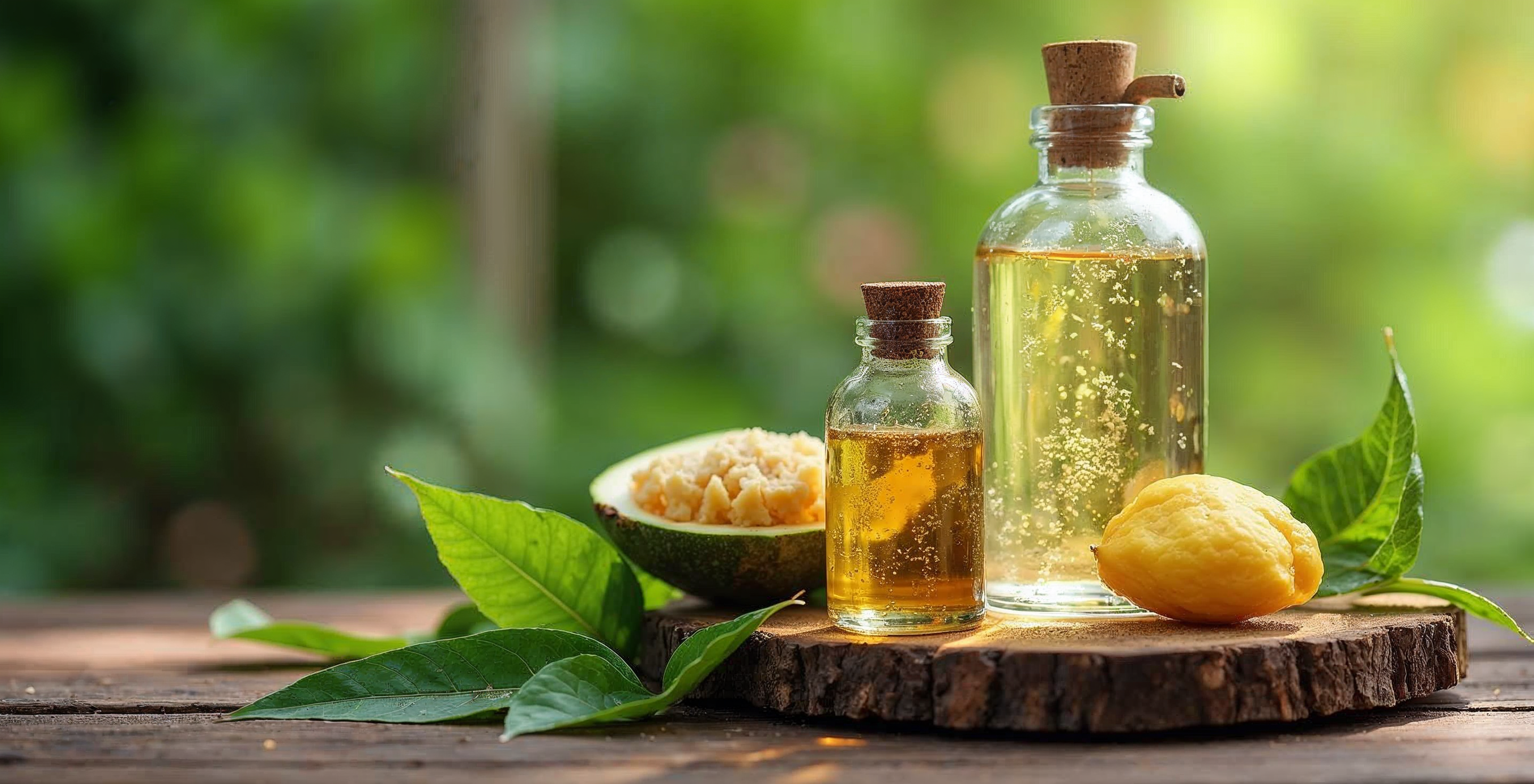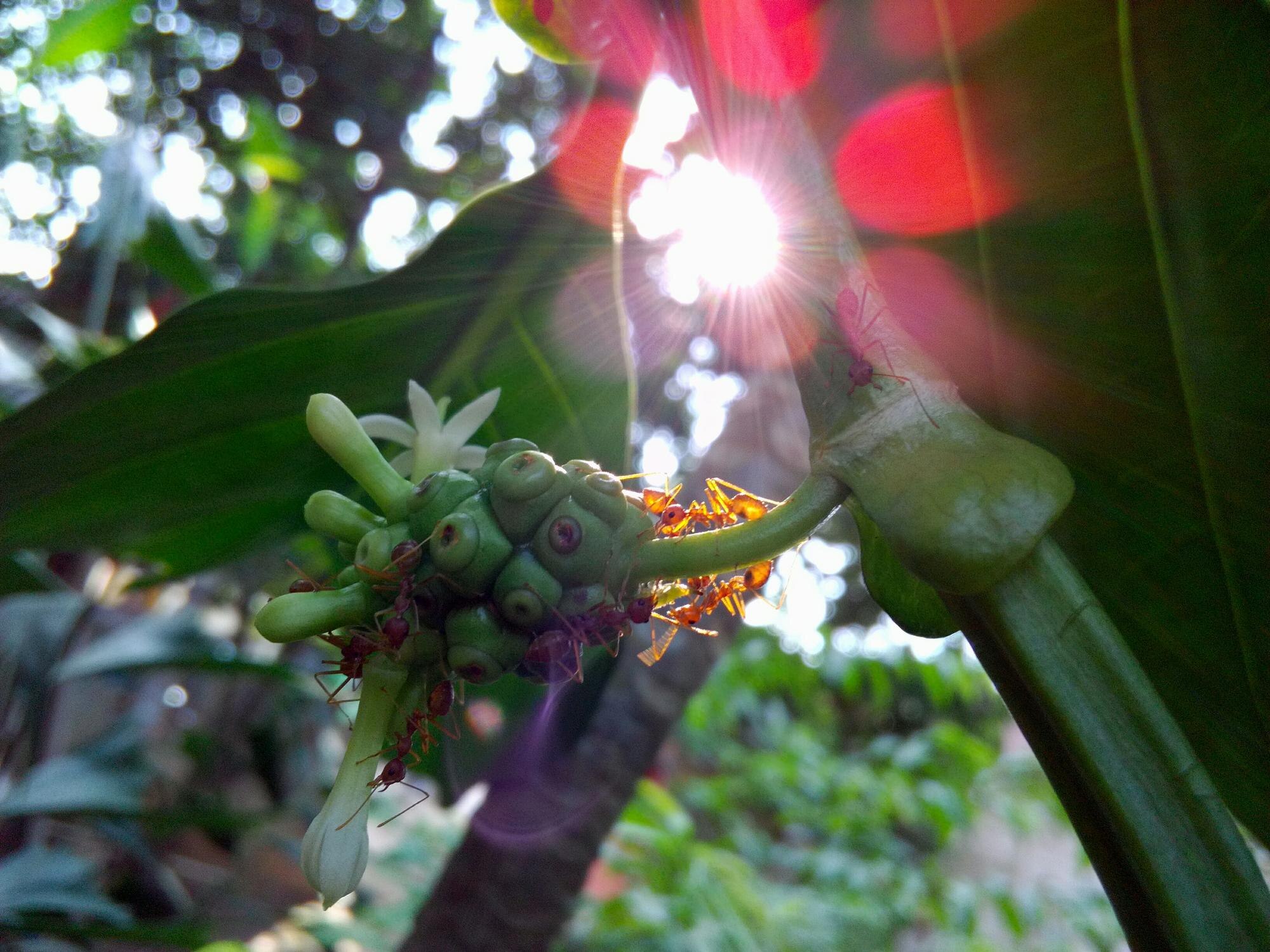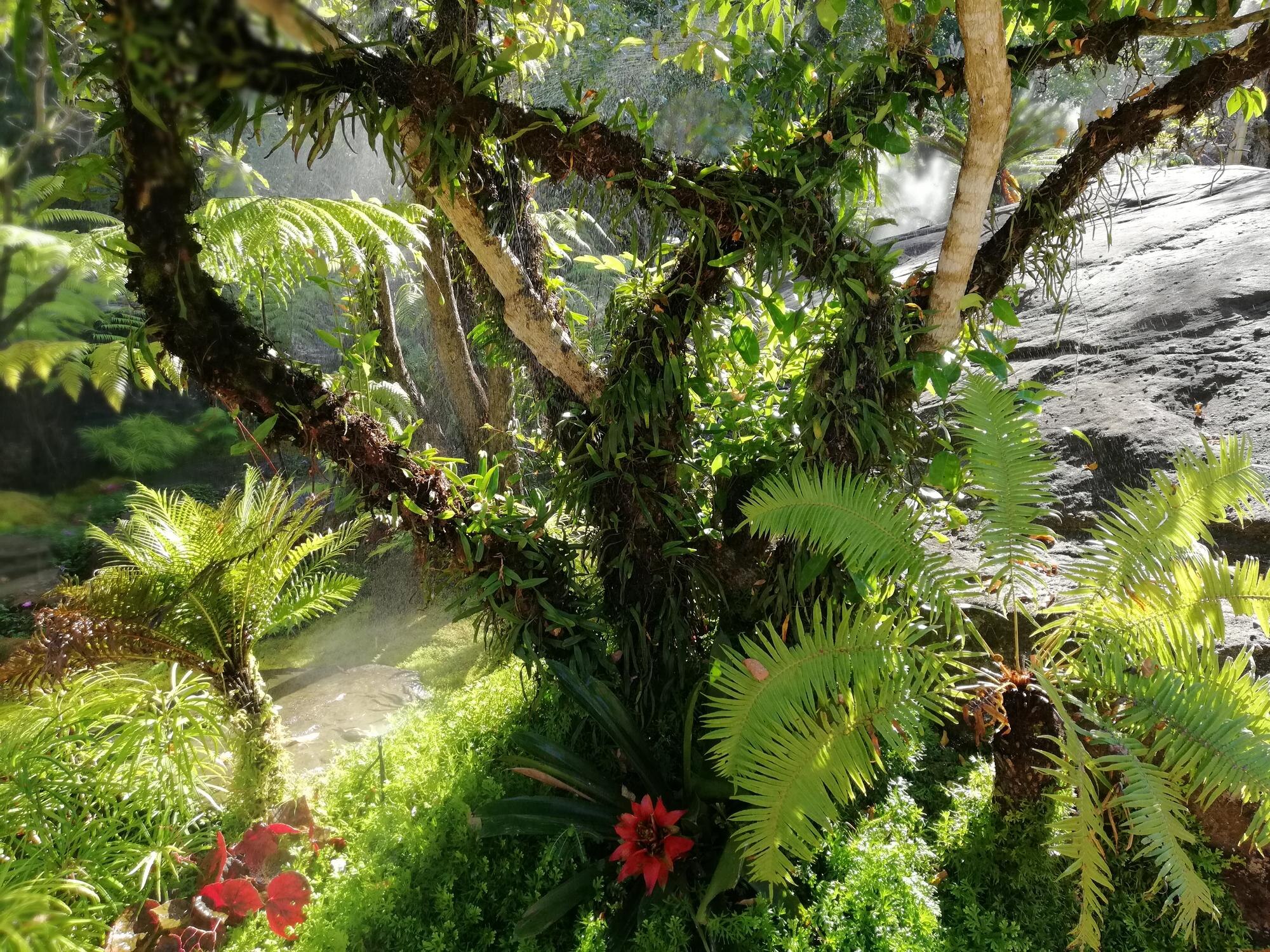Exploring Hawaiian Medicinal Practices: A Journey into Nature's Healing Wonders
Imagine stepping into a world where nature's secrets blend with ancient wisdom, offering a unique approach to health and wellness. Hawaiian medicinal practices hold the keys to this enchanting realm, where traditional healing and herbal remedies are woven into the fabric of Hawaiian culture. From the lush rainforests to the vibrant coastlines, Hawaii is not only a paradise for the senses but also a treasure trove of plant medicine and indigenous healing. In this blog post, we'll explore the fascinating world of Hawaii's natural wellness, revealing how these time-honored traditions continue to thrive and inspire. Join us as we uncover the magic of Hawaiian medicinal practices and the rich cultural heritage that sustains them. Learn more about traditional practices here.## Introduction to Hawaiian Medicinal Practices
Hawaiian medicinal practices offer a unique glimpse into a world where nature and ancient wisdom combine to promote health and wellness. These practices are deeply rooted in tradition, blending Hawaiian culture and natural wellness to create a holistic healing approach. This section will provide an overview of the foundational aspects of Hawaiian medicinal practices.
Roots of Traditional Healing
The roots of traditional healing in Hawaii stem from the island's rich cultural history and connection to the natural world. Hawaiian traditional healing, known as lāʻau lapaʻau, relies on specific plants and rituals passed down through generations. These practices involve using herbs, plants, and spiritual beliefs to restore balance and health.
- Many of these practices were traditionally kept within families or communities.
- They emphasize the importance of spiritual, mental, and physical health.
- Healers, known as kahuna, play a central role in these traditions.
Understanding these roots helps us appreciate how indigenous communities have preserved their knowledge through resilience and adaptation. For more on the kahuna and their role, visit GoodRx.
Influence of Hawaiian Culture
Hawaiian culture has significantly influenced its medicinal practices. Cultural values such as aloha (love) and pono (righteousness) are integral to the healing process. These values foster a sense of community and responsibility toward nature, which is evident in the care and respect given to medicinal plants.
- The ohana (family) concept extends to the community and environment.
- Healing practices often involve songs, chants, and dances that honor the earth.
- Cultural rituals strengthen ties between people and nature.
By embracing these elements, Hawaiian medicinal practices have developed into a rich tapestry of cultural and spiritual wisdom. Learn more about the cultural context at CWIS.
Connection to Natural Wellness
Hawaiian medicinal practices are inherently linked to natural wellness. The islands' diverse ecosystems provide a wealth of resources for herbal remedies and treatments. These natural elements form the basis of holistic health approaches that seek harmony between the body, mind, and spirit.
- Local plants are central to creating remedies for various ailments.
- Practitioners advocate for a lifestyle that harmonizes with nature.
- The focus is on prevention through healthy living and mindfulness.
This connection underscores the importance of living in balance with the environment, a principle that can guide us today. Discover more about Hawaiian plants at the Honolulu Library.
Key Hawaiian Herbal Remedies
 Hawaiian herbal remedies are a cornerstone of the island's healing traditions. This section delves into popular plant medicine uses, indigenous medicine secrets, and the health benefits of these practices. Understanding these elements provides insight into how Hawaiians have maintained health and wellness for centuries.
Hawaiian herbal remedies are a cornerstone of the island's healing traditions. This section delves into popular plant medicine uses, indigenous medicine secrets, and the health benefits of these practices. Understanding these elements provides insight into how Hawaiians have maintained health and wellness for centuries.
Popular Plant Medicine Uses
Hawaii's lush landscapes are home to a variety of plants used in traditional medicine. Plant medicine plays a critical role in treating ailments and maintaining overall health. Common plants like noni, awa (kava), and olena (turmeric) have long been valued for their healing properties.
- Noni is used for its anti-inflammatory and immune-boosting effects.
- Awa is known for its calming properties, aiding in stress relief.
- Olena acts as a powerful anti-inflammatory and antioxidant.
These plants demonstrate the diverse applications of Hawaiian herbal remedies, providing natural solutions for modern health challenges. For a deeper dive into plant uses, visit the Honolulu Library.
Indigenous Medicine Secrets
Indigenous medicine in Hawaii holds many secrets, passed down through oral tradition and practice. Healers utilize knowledge of plants and spiritual practices to treat individuals. This wisdom is often guarded, ensuring it is preserved within the community.
- Healers use specific plant combinations for tailored remedies.
- Spiritual components, such as prayer, enhance the healing process.
- Knowledge is shared through mentorship and community learning.
These secrets reveal a complex system of care that emphasizes respect for nature and holistic health. More information about these practices can be found at CWIS.
Hawaii Health Benefits
The health benefits of Hawaiian medicinal practices are numerous, offering natural wellness solutions that align with modern health needs. These benefits include both physical and mental health improvements, rooted in traditional knowledge and practices.
- Natural remedies provide alternatives to pharmaceutical treatments.
- Emphasis on prevention encourages a healthier lifestyle.
- Holistic approaches address mental and emotional well-being.
Hawaii's focus on comprehensive health and balance continues to inspire those seeking natural alternatives. To explore more about health benefits, check out GoodRx.
Understanding the Healing Process
 The healing process in Hawaiian medicinal practices involves traditional healers, techniques, rituals, and adaptations to modern times. Exploring these components provides a deeper understanding of how healing is approached and applied.
The healing process in Hawaiian medicinal practices involves traditional healers, techniques, rituals, and adaptations to modern times. Exploring these components provides a deeper understanding of how healing is approached and applied.
Role of Traditional Healers
Traditional healers, or kahuna, are vital to Hawaiian medicinal practices. Kahuna possess extensive knowledge of plants, rituals, and spiritual guidance, playing a pivotal role in the community's health.
- They undergo rigorous training and mentorship.
- Their work often includes diagnosing conditions and recommending treatments.
- Spiritual leadership is a significant aspect of their responsibilities.
These healers maintain the integrity of traditional practices while adapting to contemporary needs. For more about the kahuna role, visit GoodRx.
Techniques and Rituals
The techniques and rituals in Hawaiian healing involve a blend of herbal applications and spiritual practices. Rituals are designed to balance the body and spirit, often incorporating elements of nature.
- Herbal baths and teas are common treatments.
- Rituals may include chanting and meditation.
- Spiritual ceremonies help connect individuals with nature.
These techniques emphasize the importance of harmony and balance, essential tenets of Hawaiian healing philosophy. Discover more about these rituals at CWIS.
Modern Adaptations
As times change, so too do healing practices. Hawaiian medicinal practices have evolved, incorporating modern techniques while respecting traditional roots. Adaptations ensure these practices remain relevant and accessible.
- Integration of modern scientific insights with traditional knowledge.
- Increased availability of herbal products and treatments.
- Collaboration between traditional healers and medical professionals.
These adaptations illustrate the dynamic nature of Hawaiian healing, ensuring it continues to benefit current and future generations. More information on this evolution can be found at the Honolulu Library.
Exploring Hawaii's Medicinal Plants
 Exploring Hawaii's medicinal plants offers insights into their uses, cultivation, and sustainable harvesting. This section highlights the importance of these plants in traditional healing and their ongoing significance.
Exploring Hawaii's medicinal plants offers insights into their uses, cultivation, and sustainable harvesting. This section highlights the importance of these plants in traditional healing and their ongoing significance.
Iconic Plants and Their Uses
Hawaii is home to iconic plants used for centuries in traditional healing. These plants, each with unique properties, remain central to Hawaiian medicinal practices.
- Noni for immune support and inflammation.
- Awa for relaxation and stress relief.
- Olena for its anti-inflammatory and healing properties.
Understanding these plants' uses provides a window into the effectiveness of plant medicine. For more information on these plants, visit the Honolulu Library.
Cultivating Herbal Remedies
Cultivating herbal remedies requires knowledge of plant growth and care. Cultivation practices ensure the availability of crucial plants for medicinal use, preserving traditional methods.
- Knowledge of soil and climate conditions is essential.
- Sustainable farming techniques are often employed.
- Community involvement ensures the preservation of plant species.
These practices underscore the importance of maintaining traditional knowledge alongside modern horticultural techniques. Learn more about cultivation at CWIS.
Sustainable Harvesting Practices
Sustainability is key to Hawaiian medicinal practices. Harvesting methods ensure that plants are used responsibly, preserving resources for future generations.
- Only necessary amounts are collected to prevent depletion.
- Harvesting is timed to avoid disrupting plant life cycles.
- Practices respect natural growth and regeneration processes.
These sustainable methods highlight the responsible use of natural resources, aligning with the broader goals of conservation and respect for nature. For more on sustainable practices, check the Honolulu Library.
Embracing Hawaiian Natural Wellness
 Embracing Hawaiian natural wellness involves integrating practices into daily life while honoring their cultural significance. This section explores practical ways to incorporate these traditions and the benefits they offer.
Embracing Hawaiian natural wellness involves integrating practices into daily life while honoring their cultural significance. This section explores practical ways to incorporate these traditions and the benefits they offer.
Integrating Practices into Daily Life
Incorporating Hawaiian medicinal practices into daily life can enhance well-being and foster a deeper connection to nature. Simple steps can bring elements of these traditions into modern routines.
- Use herbal teas and remedies for common ailments.
- Practice mindfulness and meditation techniques.
- Engage in community activities that promote traditional practices.
These actions help bridge the gap between traditional wisdom and contemporary living. For more integration tips, explore resources at CWIS.
Benefits for Mind and Body
The benefits of Hawaiian medicinal practices extend to both mind and body, offering a holistic approach to health. These practices promote balance, reduce stress, and enhance physical health.
- Improve mental clarity and emotional stability.
- Strengthen the immune system and overall resilience.
- Encourage spiritual growth and self-awareness.
By focusing on these benefits, individuals can achieve greater harmony in their lives. For more on health benefits, check out GoodRx.
Cultural Significance and Respect
Respecting the cultural significance of Hawaiian medicinal practices is crucial. These traditions are not only healing methods but also integral aspects of cultural identity and heritage.
- Acknowledge the origins and history of these practices.
- Engage with the community respectfully and thoughtfully.
- Support preservation efforts and education initiatives.
Embracing these values ensures that Hawaiian medicinal practices continue to thrive and inspire future generations. Learn more about cultural significance and respect at the Honolulu Library.
